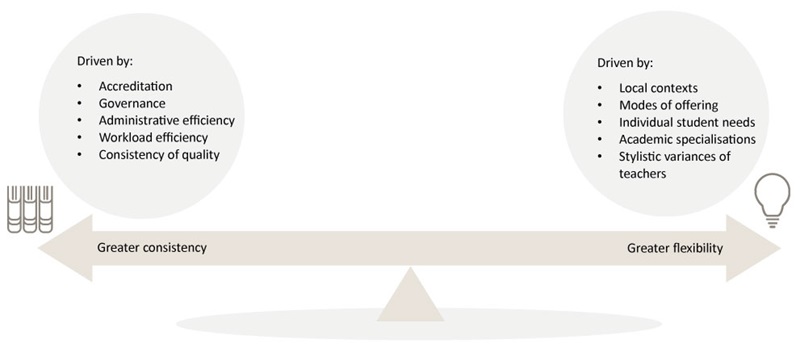This resource introduces key factors associated with delivering units in a multi-campus, national context. It overviews key considerations including balancing consistency, flexibility and opportunity.
This resource introduces key factors associated with delivering units in a multi-campus, national context. It overviews key considerations including balancing consistency, flexibility and opportunity.
Overview
On this page
Balancing consistency, flexibility, and opportunity Your students, your unique context, with equity as the driverACU’s unique position as a multi-campus institution crossing state boundaries, provides opportunities to work collaboratively to create learning experiences for our students.
A nationalised model of curriculum can be challenging to conceptualise and manage. Such a model must balance the advantages of consistency with opportunities to provide unique and flexible learning experiences for students. These experiences can draw upon the unique features of disciplines and the unique attributes of academics within a specific physical, virtual or regulatory environment. Such flexibility has the potential to put students at the centre of their learning by engaging them in enriching and meaningful learning experiences.
Achieving the appropriate balance between uniformity and specificity can be a challenging task. This challenge is exacerbated by the operational constraints of a national model. Even in courses where there is a high degree of consistency in terms of teaching approach and resources, every learning experience is unique.

Achieving the right ‘mix’ between more fixed and more dynamic and flexible elements of the curriculum requires collaboration and planning. Where the right balance is struck within a specific context, teachers have the opportunity to draw upon their unique expertise and stylistic preferences to bring curriculum to life and engage with students. Such flexibility can be accommodated provided students have the opportunity to achieve the learning outcomes.
For example:
The National Curriculum Framework aims to support academic staff in developing outcomes driven curricula that places the students at its centre. In doing so it is recognised that the operational efficiency afforded by consistency at certain levels is also an imperative.
Visit Service Central to access Corporate Services.